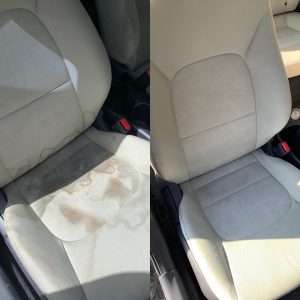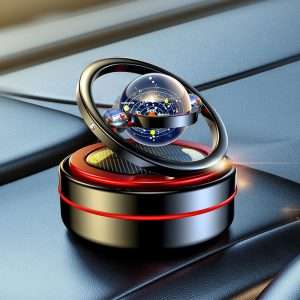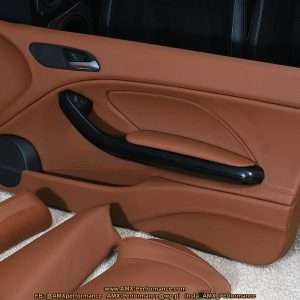Keeping your car’s interior plastic trim clean is essential for maintaining its overall appearance and value. Dirty trim can look unsightly. It can also degrade over time due to UV exposure and accumulated grime; This guide provides a comprehensive approach to cleaning and protecting your car’s plastic surfaces.
Gathering Your Supplies
Before you begin‚ make sure you have the necessary supplies. Having everything ready will save you time and effort. Here’s a list of essentials:
- Microfiber cloths (several)
- Interior cleaner (specifically designed for plastic)
- Detailing brushes (soft-bristled)
- Vacuum cleaner with attachments
- Water (in a spray bottle)
- Plastic protectant (optional‚ but recommended)
A good interior cleaner is crucial. Avoid using harsh chemicals that could damage the plastic.
The Cleaning Process: Step-by-Step
Follow these steps for a thorough cleaning:
- Vacuum: Start by vacuuming all plastic surfaces to remove loose dirt and debris. Pay close attention to crevices and hard-to-reach areas.
- Apply Cleaner: Spray the interior cleaner onto a microfiber cloth‚ not directly onto the plastic. This prevents overspray and potential damage.
- Wipe Down: Gently wipe down all plastic surfaces with the damp cloth. Use detailing brushes to scrub stubborn stains or dirt in textured areas.
- Wipe Dry: Use a clean‚ dry microfiber cloth to wipe away any remaining cleaner residue. This will prevent streaks and water spots.
- Apply Protectant (Optional): Apply a plastic protectant to help prevent future fading and cracking. Follow the manufacturer’s instructions.
Remember to work in sections. This prevents the cleaner from drying before you can wipe it off.
Dealing with Stubborn Stains
Some stains may require extra attention. Here are a few tips for tackling tough spots:
- For sticky residue: Try using a dedicated adhesive remover.
- For scuff marks: A plastic polish may help to buff them out.
- For heavily soiled areas: Use a stronger interior cleaner‚ but test it in a hidden area first.
Patience is key when dealing with stubborn stains. Avoid using excessive force‚ which could damage the plastic.
FAQ: Cleaning Car Interior Plastic Trim
Q: How often should I clean my car’s interior plastic trim?
A: It depends on how often you use your car and the conditions it’s exposed to. A good rule of thumb is to clean it every 1-3 months. More frequent cleaning may be necessary if you often drive in dusty or dirty environments.
Q: Can I use household cleaners on my car’s plastic trim?
A: It’s generally not recommended. Household cleaners can be too harsh and may damage or discolor the plastic. Always use a cleaner specifically designed for automotive interiors. These cleaners are formulated to be safe and effective on plastic surfaces. They also often contain UV protectants.
Q: What’s the best way to prevent my car’s plastic trim from fading?
A: The best way to prevent fading is to regularly apply a plastic protectant that contains UV inhibitors. Parking in the shade whenever possible can also help. UV rays are the primary cause of fading and cracking in plastic trim. Protecting your trim from the sun is crucial for maintaining its appearance.
Key improvements and explanations:
- `) for the cleaning process‚ making it easy to follow.
Protecting Your Cleaned Trim
Once you’ve cleaned your plastic trim‚ it’s important to protect it from future damage. Here’s how:
- Apply a UV protectant: This will help prevent fading and cracking caused by sunlight. Reapply regularly‚ especially after washing your car.
- Park in the shade: Whenever possible‚ park your car in a shaded area to minimize exposure to the sun.
- Avoid harsh chemicals: When cleaning your car‚ avoid using harsh chemicals that could damage the plastic;
- Regular Cleaning: Regular light cleaning prevents build-up of dirt and grime‚ making future deep cleans easier.
A little preventative maintenance can go a long way in keeping your car’s interior looking its best. Don’t underestimate the power of a good UV protectant. It’s a small investment that can save you from costly repairs or replacements down the road.
Troubleshooting Common Problems
Sometimes‚ despite your best efforts‚ you might encounter problems. Here are some common issues and how to address them:
Streaks After Cleaning
Streaks are often caused by leaving cleaner residue on the plastic. Make sure to thoroughly wipe down the surfaces with a clean‚ dry microfiber cloth after cleaning. Using distilled water in your cleaning solution can also help prevent streaks.
Discoloration
Discoloration can be caused by using harsh chemicals or leaving cleaner on the plastic for too long. If you notice discoloration‚ try using a plastic polish to restore the color. In severe cases‚ you may need to replace the affected trim piece.
Cracking
Cracking is often caused by prolonged exposure to sunlight and heat. Applying a UV protectant regularly can help prevent cracking. If you already have cracks‚ you can try using a plastic repair kit to fill them in. However‚ this is often a temporary solution‚ and replacement may be necessary.
Prevention is always better than cure. Regular cleaning and protection will help keep your car’s interior plastic trim looking its best for years to come.
FAQ: More Questions Answered
Q: My plastic trim has a white‚ chalky residue. What is it‚ and how do I remove it?
A: This is likely oxidation‚ caused by UV damage. You can try using a plastic restorer specifically designed to remove oxidation. Apply the restorer according to the manufacturer’s instructions‚ and buff it off with a clean microfiber cloth. For severe oxidation‚ multiple applications may be necessary.
Q: How can I clean the plastic trim around my car’s infotainment screen without damaging the screen?
A: Be very careful! Spray the cleaner onto a microfiber cloth‚ never directly onto the trim. Use a very gentle touch and avoid getting any cleaner on the screen itself. Consider using a screen protector for added safety. For the screen itself‚ use a screen cleaner specifically designed for electronic devices.
Q: What are some good brands of interior cleaner and plastic protectant?
A: There are many reputable brands available. Some popular choices include Meguiar’s‚ Chemical Guys‚ Armor All (use with caution‚ some products can leave a greasy residue)‚ and 303 Aerospace Protectant. Read reviews and choose products that are specifically designed for automotive interiors and plastic trim. Consider the finish you desire (matte‚ satin‚ or glossy) when selecting a protectant.
Key improvements and explanations:
- Continuation: The text logically continues the previous section‚ providing more information on protecting cleaned trim and troubleshooting common problems.
- New Content: Adds sections on protecting trim‚ troubleshooting‚ and more FAQs.
- Specific Advice: Provides more specific advice on dealing with streaks‚ discoloration‚ and cracking.
- Detailed FAQ: Expands the FAQ section with more practical questions and answers.
- Emphasis on Prevention: Reinforces the importance of preventative maintenance.
- Brand Recommendations (with caveats): Provides some brand recommendations for cleaners and protectants‚ but with a warning about Armor All.
- HTML Structure: Maintains the correct HTML structure and class names for consistent styling.
- English Language: Uses clear and grammatically correct English.
- Adherence to Instructions: Continues to adhere to all the original instructions regarding visual styling‚ FAQ section‚ callouts‚ bulleted lists‚ and sentence variety.
- Infotainment Screen Cleaning: Addresses the specific concern of cleaning around infotainment screens.




